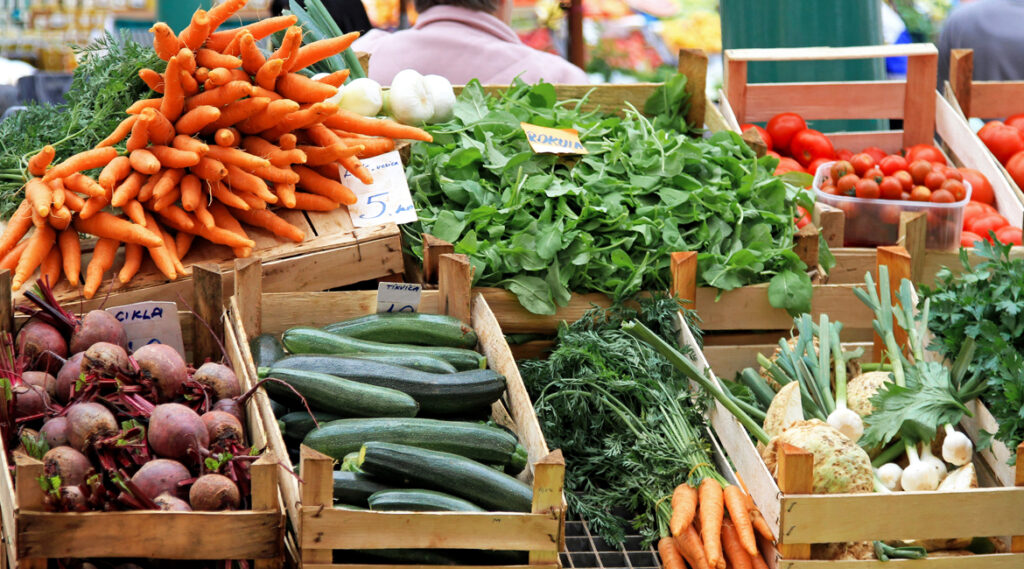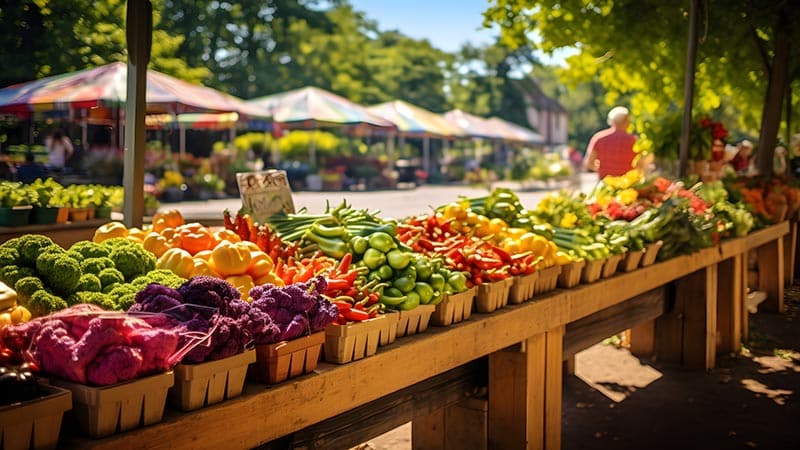
Visiting a farmers’ market is one of the best ways to connect with local agriculture and support your community while also enjoying the freshest produce available. Each season brings a unique selection of fruits and vegetables, and knowing what to look for can enhance your shopping experience and elevate your meals. Here’s a seasonal guide on what to seek out at farmers’ markets and tips on how to choose the best ingredients.
Spring: The Awakening of Freshness
As the frost melts away, farmers’ markets come alive with vibrant colors and fresh flavors. Spring is the time for tender greens and early vegetables.
- What to Look For: Search for asparagus, peas, radishes, and early greens like spinach and arugula. Strawberries are also in season, bringing a sweet touch to your spring dishes.
- Choosing the Best: When selecting asparagus, look for firm, straight stalks with tight tips. For peas, opt for pods that feel full but not overly tough. Fresh greens should be crisp and free of any wilting or yellowing. Strawberries should be bright red, plump, and fragrant.
Summer: The Bounty of Bright Flavors
Summer is the peak season for farmers’ markets, offering a cornucopia of fruits and vegetables. It’s the time to indulge in the sweet and juicy produce that summer has to offer.
- What to Look For: Tomatoes, cucumbers, zucchini, corn, bell peppers, and berries dominate the market. You might also find peaches, nectarines, and melons, all bursting with flavor.
- Choosing the Best: For tomatoes, look for those that are firm yet slightly soft at the stem end and have a rich color. Choose cucumbers that are firm and unblemished, while zucchini should be slender and glossy. When picking berries, go for those that are plump and dark, avoiding any with mold or squished appearance. Peaches should be slightly soft and aromatic, indicating ripeness.
Fall: A Harvest of Rich Flavors
As summer fades, farmers’ markets transition into a feast of autumnal produce. This season is perfect for hearty ingredients that bring comfort as the weather cools.
- What to Look For: Pumpkins, apples, sweet potatoes, beets, and Brussels sprouts take center stage. Don’t forget to check for fall herbs like sage and thyme, which complement the seasonal flavors beautifully.
- Choosing the Best: For pumpkins, select those with a sturdy stem and a smooth, firm skin. Apples should be crisp and free from bruises, with a variety of flavors available from tart to sweet. Sweet potatoes should feel heavy for their size, while beets should be firm and unblemished. When selecting Brussels sprouts, look for tightly closed, green heads.
Winter: The Warmth of Storage Crops
While winter may seem bleak for fresh produce, many root vegetables and hardy greens thrive in the colder months. Farmers’ markets often feature seasonal storage crops that can last through the winter.
- What to Look For: Carrots, parsnips, turnips, cabbage, and winter squash are great picks. Also, look for leafy greens like kale and collards, which can survive frost and are packed with nutrients.
- Choosing the Best: When selecting root vegetables, choose those that are firm and free from soft spots. Cabbage should feel dense and have tightly packed leaves, while winter squash should have a hard, blemish-free rind. For leafy greens, select crisp leaves without signs of wilting or yellowing.
Tips for a Successful Farmers’ Market Visit
- Arrive Early: Get to the market early to have the best selection of fresh produce. Some popular items sell out quickly, especially during peak season.
- Engage with Farmers: Take the time to chat with local farmers. They can provide valuable insights into the best seasonal produce, growing practices, and tips on how to prepare their products.
- Bring Reusable Bags: Carry reusable bags to transport your goodies home sustainably. A sturdy bag can also help keep your produce fresh and intact.
- Experiment with New Finds: Farmers’ markets often have unique varieties of fruits and vegetables that you might not find in a grocery store. Don’t hesitate to try something new!
- Support Local: Whenever possible, purchase directly from the farmer. This ensures you get the freshest ingredients while supporting your local economy.

